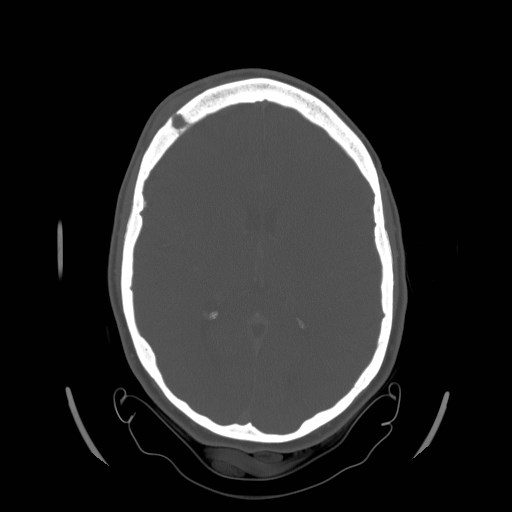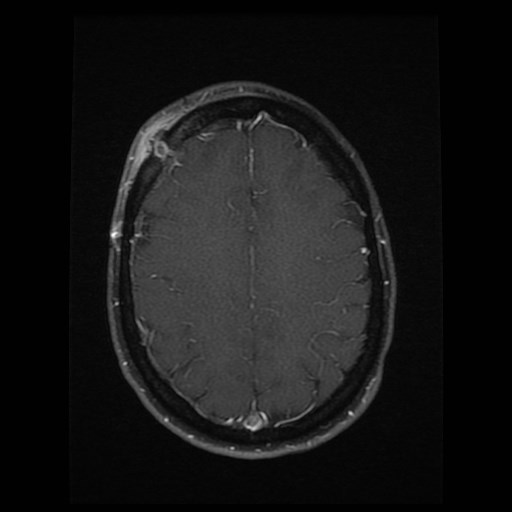Case Presentation: The patient is a 51 year old female with a past medical history of asthma, who presented with worsening, constant, right-sided frontal headaches for 1 month. Her headaches were associated with periorbital swelling and tenderness to palpation and swelling of her right scalp near a scar from a trauma 28 years ago. A CT head revealed a well-circumscribed lucency in the right frontal bone with a drainable rim-enhancing fluid collection in the soft tissues. An MRI brain revealed a right frontal bone lesion concerning for a focal abscess and sinus tract. Based on these findings, a craniotomy and resection was performed, and she was started on empiric antibiotics with Vancomycin and Zosyn. The patient was discharged on vancomycin due to growth of Corynebacterium, but there was a high suspicion of contamination. Three weeks afterwards, cultures finally grew Nocardia farcinica, and she finished a long course of Bactrim and Leukovorin.
Discussion: Nocardiosis is an uncommon bacterial infection that is typically contracted via inhalation, ingestion of contaminated food or directly via trauma, causing either localized or systemic disease, most commonly in immunocompromised patients. Nocardiosis is difficult to diagnose due to its slow growing nature. Primary cutaneous infections result in ulcerations, pyoderma, cellulitis, nodules or subcutaneous abscesses. Furthermore, osteomyelitis is rare as a site of primary infection. This patient likely had latent nocardiosis from her previous trauma, and based on literature review, there are no other reported cases of latent nocardiosis causing osteomyelitis. In addition, the patient’s presentation and imaging findings were consistent with Pott’s Puffy Tumor which involves osteomyelitis of the frontal bone, associated with subperiosteal abscesses. Pott’s Puffy Tumor is typically a complication of frontal sinusitis, but can also be seen after trauma.
Conclusions: Despite being immunocompetent and having no obvious risk factors, the patient presented with Nocardia induced osteomyelitis, ultimately leading to Pott’s Puffy Tumor. She was adequately treated with empiric antibiotics prior to being transitioned to a specific regimen once cultures finally revealed growth of Norcardia weeks afterwards. The patient was also instrumental in aiding with her diagnosis as she did her own research and identified the possibility of Pott’s Puffy Tumor prior to the medical team. This highlighted the importance of collaboration with capable patients as well as the value of internet searches in exploring unusual symptoms.


